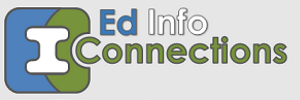How can we make online educational content findable and usable? Albert Einstein famously said that “everything should be made as simple as possible, but not simpler.” Let’s assume that using requires finding. One way to make this question a little simpler, we would ask how can content be findable? (We can then answer what makes content ‘usable’ some other time.) This question was recently asked by DigitalPromise To be more concrete, how can a teacher or student (or parent) find the content that is available about a topic they are interested in teaching and/or learning about? To be even more concrete, if a student needs to learn about volcanoes, how can their teacher find material for them that is available, how can they find it for themselves? These are the questions that get close to making that information usable in the context of a structures educational system.
At first, locating digital content might seem like a matter for a search engine (type in “volcanoes”) and tons of material is listed. But, how much of those millions of URLs has the right stuff for a given student? Well, we need to know what grade the student is in and what part of volcanoes the student and other students in a class need to know about. Do they need to see pictures of eruptions or understand about plate tectonics or some other aspect? Are they in a state that has science content arranged into learning progressions? Are they answering big questions about the earth’s movement? All of these are questions that help to focus and narrow the search for content. The key for this activity to be efficient and directed rather than random and likely inefficient involves the learning goals for this student. The learning goals can also be called standards, content standards, learning progressions, objectives and other terms. Let’s just call them content standards for now even though to say “content” can be pretty limiting from an educational sense. And then the key here is to embed the content standards into the digital infrastructure to support searching for content and other supports such as assessment items.
Content standards have been in digital forms since the 1980s when publishers of standards (see AAAS Benchmarks for Science Literacy for an exemplar) began to publish documents that describe the standards and how they relate to each other. Anyone who spends even a little time with standards documents might quickly realize that these are complex texts with a lot of information. Navigating them is not trivial and they are the product of many hours of expert work. Individual statements are often rich with condensed instructional detail. They often relate to each other in strands. They use special terms or terms that they may have heard, but that have special meaning in the context of the standard (ex: “uplift” and “bedrock”). When we consider that standards are likely to also relate to the work students are assigned and examples of the work they, each standard statement is like a microcosm of educational possibilities. Putting them into a digital form that is reusable across different contexts and that could be used for searching is not trivial. It is not trivial.
An important first step has been taken by the Global Learning Resources Connection (GLRC) that has funding from the National Science Foundation (NSF), the US Department of Education, and many corporate and non-profit partners. GLRC is using semantic web technology and has developed an international approach. This makes sense as a large number of educational topics are not specific to a region. Part of the appeal of GLRC is in its simplicity. It uses a mainstream method of information representation that should be able to be integrated into search engines and other types of resources easily. It also has the advantage of a head start on this problem and years of experience with it. At the same time, the type of tools educators may need in the future can be different from the ones we have needed in the past. Tools for locating educational resources seem to be rich with challenges and questions about how to get the right information to students when they need it.

Leave a Reply